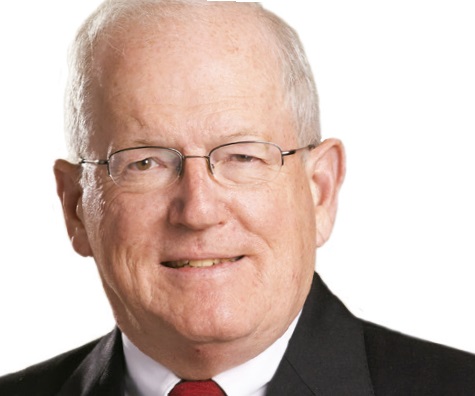There’s a lot to be said for change, but it requires thought and perspective
In his budget message, Gov. Chris Sununu proposed the merger of the University System of New Hampshire and the Community College System of New Hampshire as well as a net reduction in spending on higher “public” education in the state by 9%, from a total of $151 million to $138 million. The proposal is not new and has merit from a number of perspectives.
Demographics show a decreasing pool of traditional new students, those graduating from high school in New England and particularly in New Hampshire. At the same time, the four components of the university system — UNH, Keene State College, Plymouth State University and Granite State College — and the seven institutions of the community college system — six community colleges and New Hampshire Technical Institute — all have expanded and transformed their offerings so that they all seek to attract the same students. And the two system offices, each with a board, a chancellor and a staff that seemingly parallel each other, have grown in an environment of expecting increasing demand.
That demand has not happened. Except for Vermont, New Hampshire has the lowest rate in the nation of attracting its high school graduates to state colleges. That is largely because the cost of in-state tuition still can be more expensive than going out of state, which decreases natural demand further. By not funding its systems, New Hampshire has continued to create its own problem, which it is now trying to solve by consolidation.
The governor, in his explanation, said consolidation would allow students enrolled in any component to take courses in the others, thus somehow saving money. The error in this argument is that students already can do that.
Understanding history can be relevant to knowing the rationale for the present structure.
The university system was born in 1963, when the “normal schools” at Plymouth and Keene were transferred from the jurisdiction of the Department of Education to the jurisdiction of the UNH board of trustees. In 1971, the university system was officially started, with a chancellor, separate office and staff. After that, the bureaucracy grew, political balance resulted in parallel building at Keene and Plymouth when new facilities were approved at UNH and, in the final irony, a fourth institution was created, Granite State College, when all three of the others wanted to host the online and continuing education component, adding administration, overhead and facilities.
On the community college side, the various “technical colleges” which trained workers in such things as
welding, HVAC, plumbing and other trades, evolved into two-year schools
offering liberal arts and other courses competing with everyone else.
Eventually, a coordinating office was established, resulted in a system
office mirroring the USNH office, with the resulting personnel, offices
and cost. All of this was done with logic and legislative approval, but
ending up with a fairly complex bureaucracy, perhaps for good reason,
but large nevertheless.
As
all this evolved, the various stakeholders were given seats at the
table, with alumni, state departments, students and others having seats
on the governing boards, recognizing the complex relationships that
support higher education institutions.
The
governor’s proposal starts with a reorganization from the top,
combining the governing boards. In that one action, however, the seats
at the table of all the constituencies currently involved are taken
away. There might be a case
for that move if the state provided the majority of funding, but in New
Hampshire where the public contribution is miniscule, the argument for
the state dictating this action without input from all is, at least,
diminished.
Rather
than starting at the top, a study of how to reduce duplication,
bureaucratic costs and how to “right-size” the supply of higher
education to the anticipate demand would seem to need to start with
collection of data, study by experts and design by a group of people
from all constituencies involved. That way a comprehensive proposal of
what the institutions should look like could be fashioned, which could
command the support of all those constituencies, rather than forcing
this through a proposal effected in several lines of a state budget.
There
is a lot to be said for the proposition that the present situation is
overbuilt, and there is a lot to be said for doing change right. But it
is not as simple as it seems. It is time to slow down and not cut
funding at the same time.
Brad Cook is a Manchester attorney. The views expressed in this column are his own. He can be reached at bradfordcook01@gmail.com.